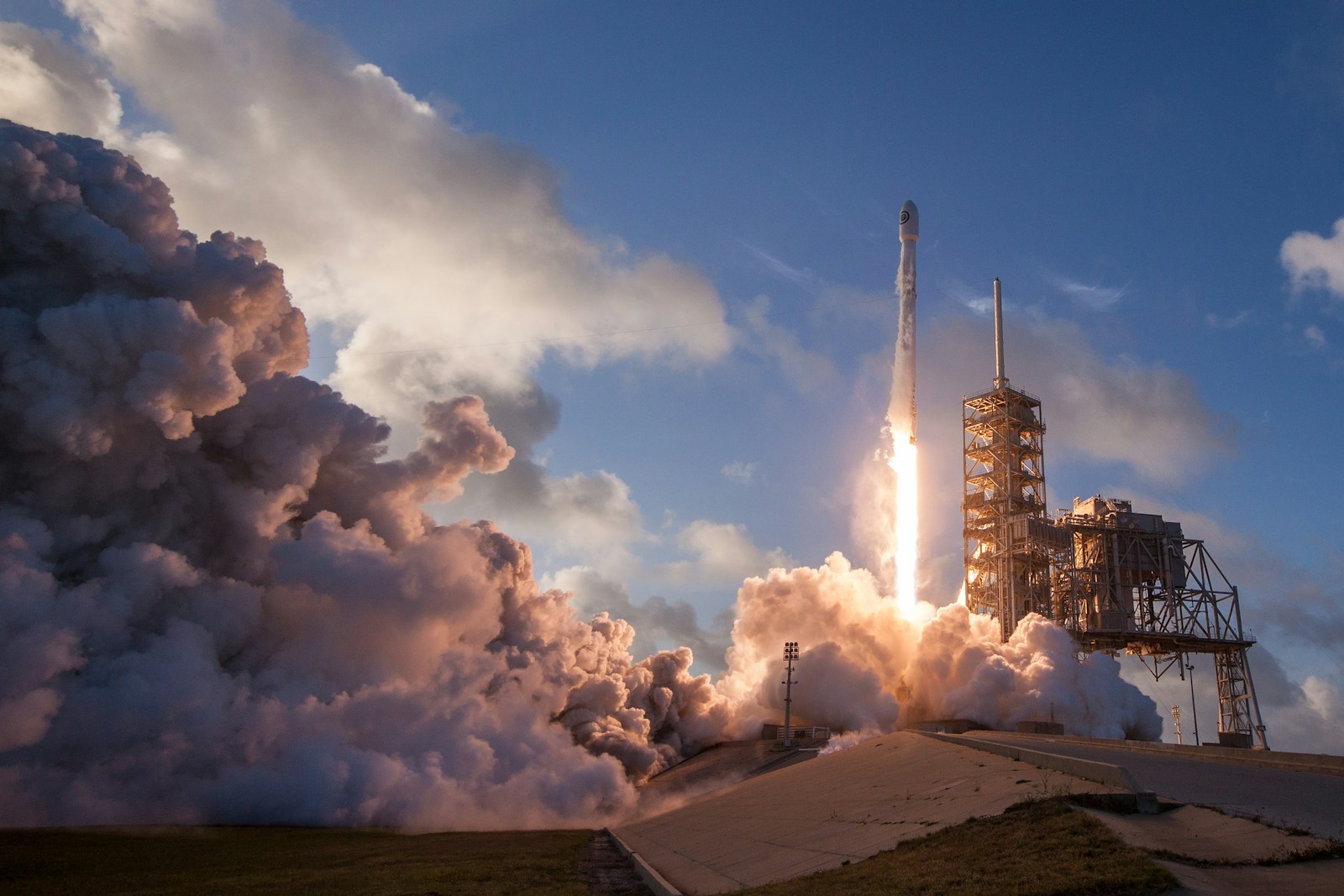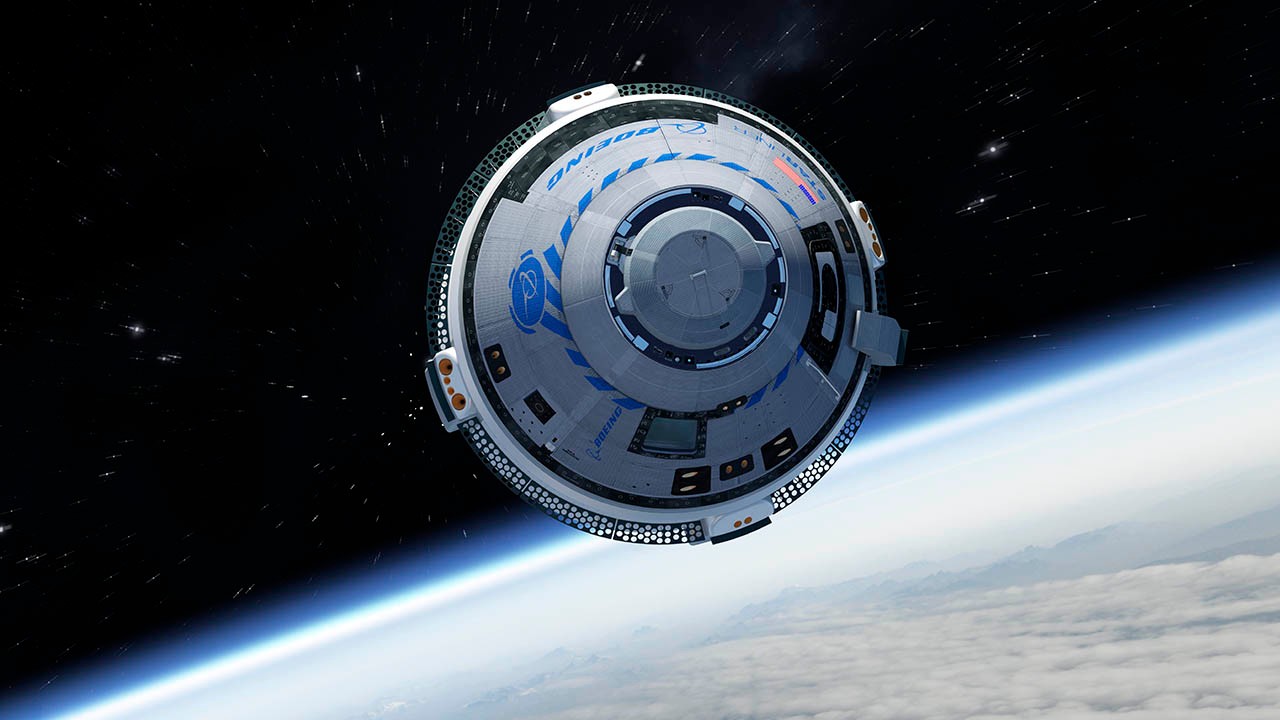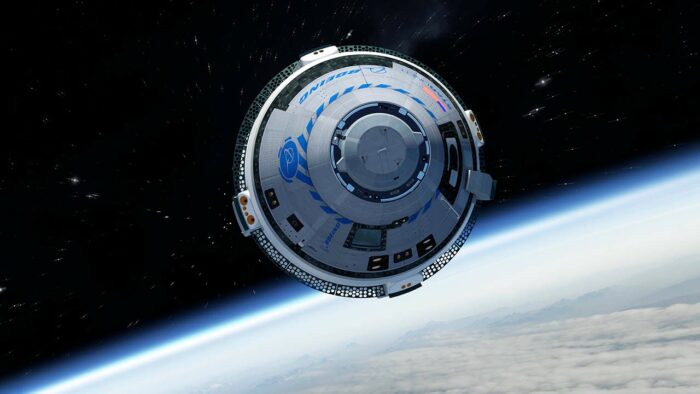By: Julia Seibert
By all indications, SpaceX should be rolling in cash. It’s the backbone of the modern space age; the company’s Falcon rocket series obliterated previous records by launching almost 100 times in 2023, while its Starlink internet satellites make up around half of the roughly 10,000 working sats in orbit. But behind these triumphs, the numbers tell a different story: a decades-long tale of trials, tribulations, and billions upon billions in investment. Not a penny made it into the black until 2023 when Falcon and Starlink began to pay off. Now, as the first profits start trickling in, SpaceX is finally getting closer to its ultimate goal: for its Earthly empire to pay for its Martian one.
What is SpaceX?
Even without sending anyone to Mars, SpaceX has managed to become the biggest rockstar in space. The private company was established in 2002 out of California after founder Elon Musk realized neither NASA nor anyone else could cough up a rocket capable of ferrying people to our nearest planetary neighbour. To survive catastrophe on Earth, he argued, humanity must become a multi-planetary species (a catchphrase so common in Musk’s vernacular that it’s become cliché). And for that, reusable rockets are a must – so SpaceX set out to make some. Its methods, while unorthodox, worked; blowing up rockets, collecting data, and building a better version allowed the company to advance its designs at a breakneck pace.
Now, SpaceX’s Falcon rocket series – mostly the medium-lift Falcon 9, sometimes the heavy-lift Falcon Heavy – launches every few days, its boosters performing an elegant pinpoint landing every time. It’s a sight to behold, and no would-be competitor can seem to pull it off or match its price. Most launches carry SpaceX’s Starlink satellites, a thousands-strong constellation whose internet and direct-to-cell services are set to become the company’s primary moneymaker. Other launches carry commercial satellite payloads or SpaceX’s own reusable Dragon capsule, which frequently travels to the International Space Station (ISS) carrying people or cargo. But SpaceX’s most formidable undertaking is developing Starship, a fully reusable yet halfway affordable megarocket that would carry 150 tons to orbit in one swoop. Once SpaceX can get it to stop blowing up, it’ll turn the industry on its head – and, the company hopes, bring people to Mars.
Overview of SpaceX’s Business Model
Reusability
Reusability is the crux of SpaceX’s business model, and for good reason: it’s necessary for not leaving astronauts stranded on Mars and saves a bucketload of money, too. Manpower and manufacturing are among the priciest parts of rocket-making, and SpaceX saves millions by reusing at least parts of its Falcons. Musk mentioned in 2018 that the Falcon 9 booster is the most expensive part of the rocket, making up 60% of the cost, while the payload fairings make up 10%. Reusing both and saving 70% means the money pits are now the expendable second stage and the launch itself, plus around $1 million for refurbishment. Reusability also lets Falcons launch every few days, further lowering costs due to economies of scale.
It’s therefore not surprising that, as noted by Musk in 2020, the marginal launch cost of a partially reused Falcon 9 is only around $15 million: not cheap to the average Joe, but practically nothing compared to the hundreds of millions it took to get the Space Shuttle off the ground (exact SpaceX numbers may have changed since Musk spoke on them). Though SpaceX cuts itself a juicy profit by charging customers around $67 million a launch, nobody else even gets close. Competitors can’t seem to get their minds around reusability, and their dollars-per-kilogram to Low Earth Orbit (LEO) is still several magnitudes higher.
Vertical Integration
Reusability isn’t the only trick up SpaceX’s sleeve. The company makes a point to produce as much as it possibly can in-house to further reduce costs. This isn’t standard in the industry; other companies like ULA or Arianespace rely on hundreds or even thousands of contractors for their rockets, resulting in a bloated, expensive, and sluggish process. Initially, SpaceX had tried going down that route. But after a contractor asked for ‘like a year and a half in development and hundreds of thousands of dollars’ to provide a single valve, SpaceX itself decided to take a stab at it, explains Tom Mueller, SpaceX’s former propulsion CTO (as reported by Smithsonian). A few months later, SpaceX’s engineers had cracked it. Since then, ‘we passionately avoid space vendors,’ says Mueller. As of 2022, 85% of SpaceX is vertically integrated (according to Eric Berger). Everything from its engines to rocket parts to flight computers are made in-house; SpaceX even recently acquired parachute specialists Pioneer, one of its few outside contractors.
Idiot Index
Every last screw that enters SpaceX property is subject to Musk’s Idiot Index: the ratio of a part’s cost compared to the cost of its raw materials. As described in Walter Isaacson’s biography of Musk, ‘something with a high idiot index – say a component that cost $1,000 when the aluminum that composed it cost only $100 – was likely to have a design that was too complex or a manufacturing process that was too inefficient’. If an item’s Idiot Index scores too high, it’s manufactured in-house, like the aforementioned valve. If not, there’s nothing wrong with buying it from outside as long as it does the job. SpaceX often uses cheap, commercial off-the-shelf components, and even installed some Tesla hardware on early versions of its Starship rocket.
Where Does SpaceX Get Its Money?
Private investment
Despite SpaceX’s best efforts, rockets don’t exactly come cheap. The company relies on much investment and opens funding rounds multiple times a year, which are not for the faint of heart; hundreds of millions to billions are raised per round. Since developing spacecraft and rockets can take decades and is inherently risky, leaving its fate up to public trading is not the best idea. Instead, much of SpaceX’s funding comes from private investments, including Alphabet and Fidelity Investments, as well as Musk himself. As of 2021, the company had brought in over $6 billion in equity financing, and according to a Wall Street Journal report on SpaceX’s finances, the company hoovered up $2 billion from issuing shares in 2022. Starlink and Starship development soak up most of that.
National Defense and Government Contracts
But private investment alone was never going to cut it; in fact, about half of the $1 billion used by SpaceX throughout its first decade came from government investment (according to a 2019 Space Angels report). Government contracts, especially the US’s, are almost a must-win for companies hoping to break into the space scene. Not only are they lucrative, but they give the company a chance to show off its tech to attract other customers. For SpaceX, this method worked a treat; the cash was put towards the Falcon rockets and Dragon spacecraft, which now fly NASA space probes, ISS missions, and just about anything else. SpaceX is being paid a total of almost $5 billion by the agency for astronaut rides alone (as reported by BBC). The company is also under contract with NASA for to provide two modified Starships as lunar landers for the agency’s Artemis program for around $4 billion.
It isn’t just NASA that’s enjoying SpaceX’s services, though. Other countries and regions, such as Europe or South Korea, sometimes hitch a ride on Falcon as they lack capable rockets of their own. But the US government is by far SpaceX’s juiciest client. As well as NASA payloads, satellites developed by the US Space Force, the US National Reconnaissance Office (NRO), and the US Department of Defense (DoD) are often found atop a Falcon 9 or Heavy. SpaceX jacks up the price for these secretive missions due to the extra infrastructure and security requirements. Starlink has also proven its military prowess during a handful of exercises and is now under contract with the DoD to provide coverage to Ukrainian forces, who use it for drone strikes and communications. SpaceX’s Starshield, a Starlink-based satellite service designed to entice governmental customers, also won its first DoD contract in late 2023.
Starlink Internet Services
Rockets might be more glamorous, but for a peek into the heart of SpaceX’s financial future, look no further than Starlink. The concept behind it is simple: a constellation of at least 12,000 satellites in LEO ensures no place on the planet is left without lightning-fast coverage. It’s designed for those living in remote locations as well as planes and boats; Starlink receivers can already be found on a sizeable fleet of cruise ships. SpaceX is also beginning to launch Starlinks designed for direct-to-cell service, and is planning pint-sized receivers that fit into a backpack. As of December 2023, Starlink has over two million users and has started to break even – but that’s far from the company’s goal of serving 20 million by 2022.
Despite the underwhelming start, SpaceX has big plans for Starlink – namely that it becomes the company’s cash cow. The launch market is capped, says Musk, and with an industry as mercurial as space, nothing is guaranteed. So SpaceX is putting its trust in Starlink, which the company hopes could bring in around $30 billion in revenue per year. It’s probably a good idea; even with Starlink’s lean numbers, it already raked in more cash than the launches did in 2023 (according to analysis from Payload). Now, SpaceX preparing to hit $15 billion in revenue for 2024, with most of it coming from Starlink. All that dough will then pay for those cash-guzzling Mars missions.
Spacecraft and Rocket Sales
Most of SpaceX’s launches send up Starlinks or government payloads, but its rockets are also a popular choice in the commercial scene. Communications companies such as Intelsat, OneWeb, and ViaSat are frequent customers. Even Amazon – established by Jeff Bezos, founder of SpaceX rival Blue Origin – had to cave and book some of its Kuiper internet satellites onto a Falcon 9 after shareholders sued.
But nobody loves SpaceX as much as small satellite companies, who make full use of its Transporter rideshare missions. By stuffing a Falcon 9 with as many satellites as possible – the ninth Transporter mission featured 113 payloads – customers share launch prices, and SpaceX knocks another few tens of millions off the price to stay ahead of the competition (according to Payload estimates). It’s an absolute steal; buying a ride for your 300-kilo payload aboard Rocket Lab’s small Electron rocket will set you back around $7.5 million, but with Transporter, it’s just $1.8 million. True, small rockets can taxi your payloads into specific orbits – Transporter dumps all passengers out at once – but at that price, it’s a no-brainer. The trips are unsurprisingly wildly popular, with 12 more Transporter trips are planned on the Falcon 9, booked through to the end of 2027.
Space Tourism and Commercial Human Spaceflight
It’s not quite as affordable as a trip to the beach, but if you’ve got the cash, SpaceX is happy to fly you to your desired cosmic destination – though trips to Mars might still take a few years. SpaceX’s first venture into tourism was 2021’s Inspiration4 mission, which saw four non-career astronauts spend three days orbiting Earth aboard Dragon for charity. The mission’s commander, billionaire Jared Isaacman, paid less than $200 million for the stint. Since then, private company Axiom has used SpaceX for three flights to the ISS, charging roughly $55 million per seat. The service is a golden opportunity for countries lacking independent access to space to send astronauts to the station. Turkey, Saudi Arabia, and Sweden (among others) have sent astronauts via Axiom, and astronauts from Poland and Hungary are scheduled for the next flight.
With Inspiration4, Isaacman caught the space bug. He chartered Dragon for two more flights for his privately sponsored Polaris program, the first of which will involve the first all-private spacewalk (using still-untested SpaceX suits). The third Polaris mission will be aboard Starship, which has also been booked for at least two more private zips around the moon. Starship, whose payload bay’s pressurized volume is bigger than the ISS’s, is also being eyed by NASA as a space station, which would likely attract tourists, too. On a slightly crazier note, SpaceX hopes Starship might eventually serve the same purpose as an airliner, bringing humans halfway across the world in 30 minutes. As nuts as that sounds, recent estimates suggest that once Starship hits its stride and becomes fully reusable, the ‘economics… begin to look closer to those of an airline’ (as reported by Payload).
SpaceX’s Current Market Competitors
ULA
It’s pretty clear that SpaceX has little serious competition, but United Launch Alliance – an old frenemy mostly specialized in governmental launches – is currently as close as it gets. The company recently debuted its Vulcan Centaur rocket, a powerful machine honed towards orbits further out in space. While harder to get to, these orbits provide an ideal vantage point for spy or communications satellites, and are riddled with governmental and telecommunications machines. But Vulcan isn’t reusable, nor will it have a rapid launch cadence. It also isn’t all that competitively priced for LEO launches, which make up the vast majority of spaceflight. It’s snapped up a few commercial customers including some of Amazon’s Kuiper constellation, but just how competitive it will become beyond governmental missions remains to be seen.
Rocket Lab
A hungrier competitor to SpaceX is Rocket Lab, which currently serves as the kingpin of small rockets. But it’s not a very big kingdom; there’s only so much cost efficiency you can squeeze out of a small rocket. Still, with nine rockets launched in 2023, it boasts the highest launch cadence of SpaceX’s competitors, luring customers with customized mission profiles. Now, Rocket Lab is looking to go up a size through its Neutron rocket, tentatively set for a 2024 debut (though this will likely slip). The rocket is akin to a smaller Falcon 9, featuring a reusable booster and similar dollar-to-orbit ratios.
In addition to launches, Rocket Lab is also beginning to compete with SpaceX on the spacecraft front, as both build satellite buses that customers such as governments can customize. Rocket Lab recently won a juicy $515 million contract for 18 communications satellites as part of the SDA’s Proliferated Warfighter Space Architecture (PWSA) constellation, which SpaceX is also involved in.
SpaceX’s Current Financial Standing
SpaceX’s Market Share and Competitive Edge
SpaceX’s market share speaks for itself. Its launches delivered 80% of the world’s spacecraft mass to orbit in 2023 and accounted for 92% of American launches. And the dominance is here to stay; while some competitors might begin to snap at SpaceX’s heels, it might take years – even decades – for their prices and cadences to come anywhere close.
SpaceX’s competitive edge lies not only in its technology but its financial resilience. For years, the company hemorrhaged money while it blew up rocket after rocket, frantically iterating until something worked. When it did, the Falcons took over the world. The same thing seems to be happening now with newer projects like Starlink and Starship. Despite raking in $4.6 billion in 2022, SpaceX’s losses added up to $5.2 billion. These expenses, plus those of the previous year, came from property and equipment shopping sprees as well as ambitious research and development campaigns for the newfangled tech (as reported by WSJ). The megarocket alone has already sucked up at least $5 billion in development costs, which might balloon to $10 billion (as reported by Payload). But if all goes to plan, it’ll pay for itself – while stingier competitors struggle to catch up.
SpaceX’s Emerging Revenue Streams
Starlink should become SpaceX’s money-printing machine in the next few years. With that in place, SpaceX can focus on Starship. What really sets this rocket apart is its shockingly low price – at least if Musk is to be believed. He has advertised a marginal cost of $10 million per Starship flight, though SpaceX will probably charge a much higher price, especially in the beginning, to make back the estimated $10 billion development cost (as reported by Payload and Ars Technica). Musk’s estimates are always a little on the optimistic side, but at 150 tons to orbit in one go, even a tenfold increase in price would be dirt cheap.
Though the monstrous rocket is designed for Mars, it might make a nice buck back on Earth, too. Tourists, NASA, and the US military are already lining up, and with the possibility of deploying space stations and satellite constellations at a much lower price, new undertakings such as space-based manufacturing, space mining, or perhaps even point-to-point Earth transport might begin to take shape. But it’s hard to predict the full impact of the rocket, a behemoth the likes of which have never been seen. After all, it’s not an Earthly beast; it’s a Martian one.
Share this article:








